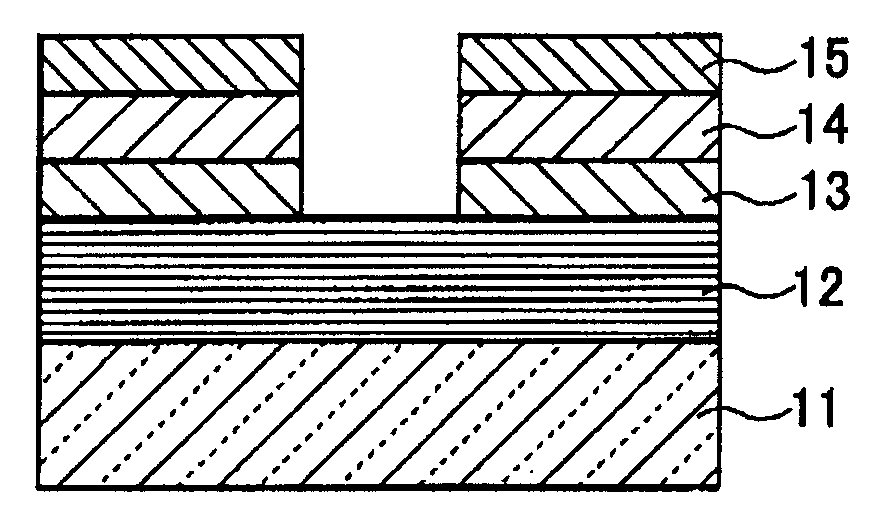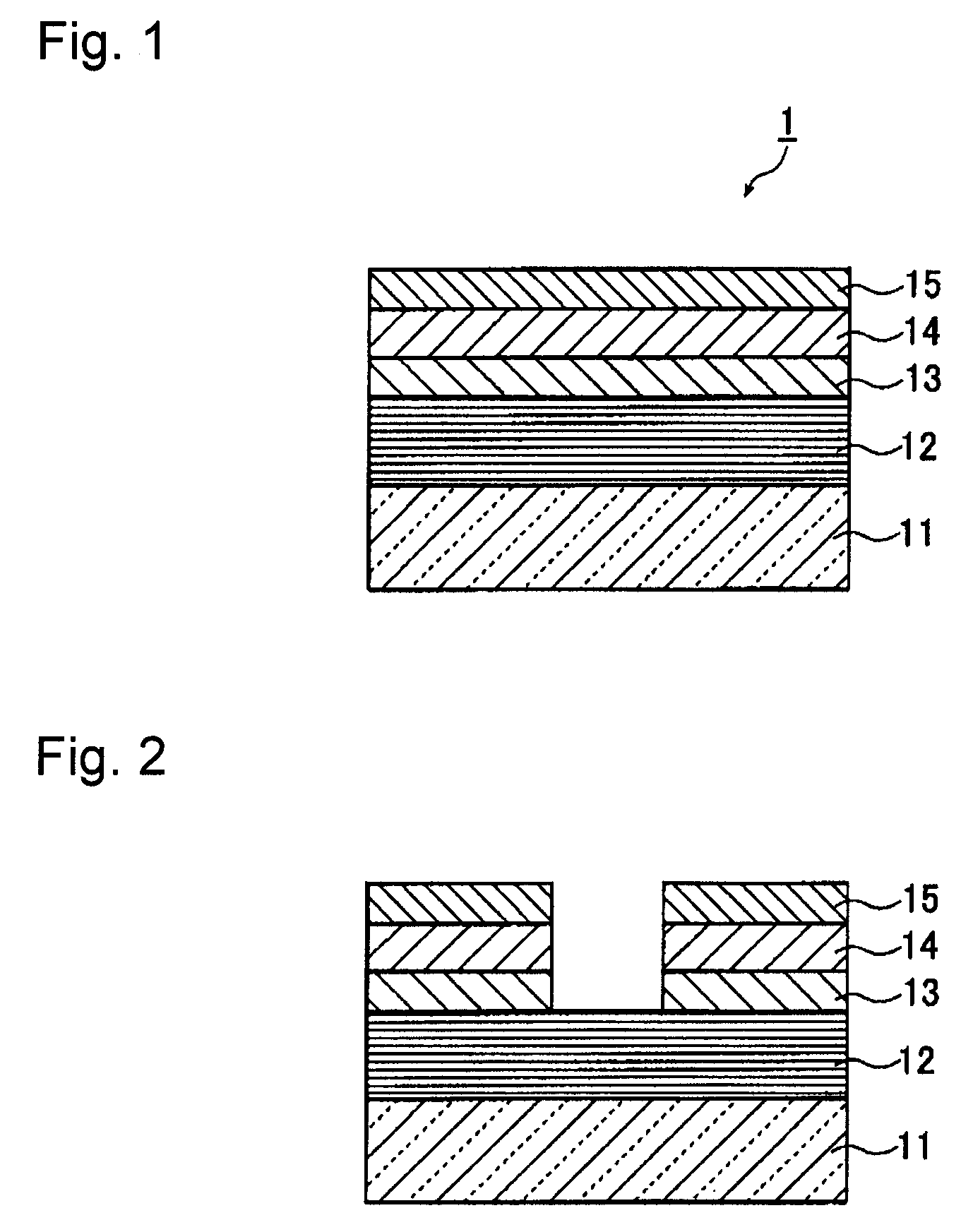Reflective mask blank for EUV lithography
a lithography and mask technology, applied in the field of reflection mask blanks, can solve the problems of accelerating microsizing of semiconductor devices, close to the resolution limit of conventional photolithography, etc., and achieve the effects of low electrical resistivity, excellent smoothness, and high electrical resistan
- Summary
- Abstract
- Description
- Claims
- Application Information
AI Technical Summary
Benefits of technology
Problems solved by technology
Method used
Image
Examples
example 1
[0144]In this Example, an EUV mask blank 1 shown in FIG. 1 was prepared. However, in the EUV mask blank 1 in Example 1, a low reflective layer 15 was not formed on an absorber layer 14. As a substrate 11 for film deposition, a SiO2—TiO2 glass substrate (size: 6 inch (152 mm) square, thickness: 6.3 mm) was used. This glass substrate has a thermal expansion coefficient of 0.2×10−7 / ° C., a Young's modulus of 67 GPa, a Poisson ratio of 0.17 and a specific rigidity of 3.07×107 m2 / s2. This glass substrate was formed by polishing to have a smooth surface with a surface roughness (rms) of at most 0.15 nm and to a flatness of at most 100 nm.
[0145]On the rear side of the substrate 11, a Cr film having a thickness of 100 nm was deposited by means of magnetron sputtering to provide a high dielectric coating having a sheet resistance of 100Ω / □.
[0146]To a flat plate-shaped usual electrostatic chuck, the substrate 11 (size: 6 inch (152 mm) square, thickness: 6.3 mm) was fixed by means of the forme...
example 2
[0181]In this Example, an EUV mask blank 1 was prepared wherein a low reflective layer 15 (TaHfON film) containing Ta, Hf, O and N is formed on an absorber layer 14.
[0182]In this Example, the procedure to form an absorber layer 14 on a protective layer 13 was carried out in the same manner as in Example 1. On the absorber layer 14, a low reflective layer (TaHfON film) containing Ta, Hf, O and N was formed by magnetron sputtering, as a low reflective layer 15 against an inspection light having a wavelength of 257 nm. The compositional ratio (at. %) of the low reflective layer was measured by the same method as in Example 1 and found to be Ta:Hf:N:O=35:15:15:35.
[0183]The film deposition conditions for the low reflective layer 15 (TaHfON film) were as follows.
Film Deposition Conditions for Low Reflective Layer 15 (Tahfon Film)
[0184]Target: TaHf compound target (compositional ratio: Ta 55 at. %, Hf 45 at. %)
[0185]Sputtering gas: Mixed gas of Ar, N2 and O2 (Ar: 45 vol %, N2: 23 vol %, O2...
example 3
[0232]In this Example, an EUV mask blank 1 was prepared wherein a low reflective layer 15 (TaHfO film) containing Ta, Hf and O was formed on an absorber layer 14.
[0233]In this Example, the procedure up to forming an absorber layer 14 on a protective layer 13 was carried out in the same manner as in Example 1. On an absorber layer 14, a low reflective layer (TaHfO film) containing Ta, Hf and O was formed by magnetron sputtering as a low reflective layer 15 against an inspection light having a wavelength of 257 nm. The compositional ratio (at. %) of the low reflective layer was measured in the same manner as in Example 1 and found to be Ta:Hf:O=40:20:40.
[0234]The film deposition conditions for the low reflective layer 15 (TaHfO film) were as follows.
Film Deposition Conditions for Low Reflective Layer 15 (TaHfO FILM)
[0235]Target: TaHf compound target (compositional ratio: Ta 55 at. %, Hf 45 at. %)
[0236]Sputtering gas: Mixed gas of Ar and O2 (Ar: 70 vol %, O2: 30 vol %, gas pressure: 0....
PUM
| Property | Measurement | Unit |
|---|---|---|
| surface roughness | aaaaa | aaaaa |
| thickness | aaaaa | aaaaa |
| thickness | aaaaa | aaaaa |
Abstract
Description
Claims
Application Information
 Login to View More
Login to View More - R&D
- Intellectual Property
- Life Sciences
- Materials
- Tech Scout
- Unparalleled Data Quality
- Higher Quality Content
- 60% Fewer Hallucinations
Browse by: Latest US Patents, China's latest patents, Technical Efficacy Thesaurus, Application Domain, Technology Topic, Popular Technical Reports.
© 2025 PatSnap. All rights reserved.Legal|Privacy policy|Modern Slavery Act Transparency Statement|Sitemap|About US| Contact US: help@patsnap.com


